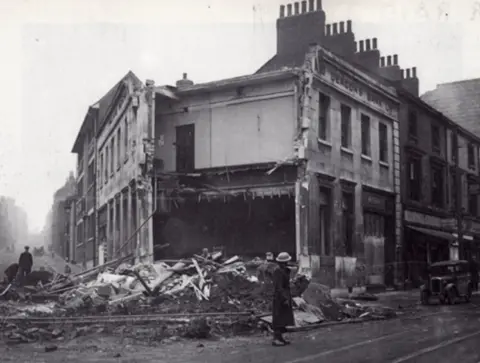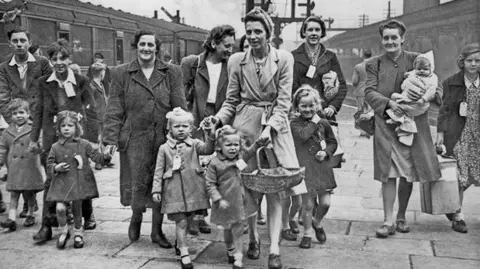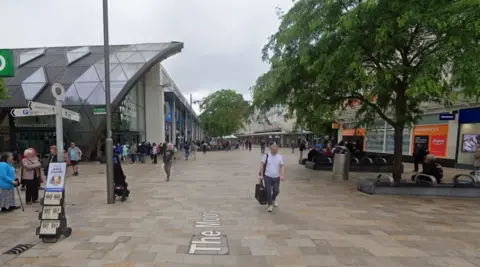Blitz artefacts wanted for expanded exhibition
 Sheffield Newspapers
Sheffield NewspapersA history group is urging local people to come forward with meaningful and sentimental objects from the Sheffield Blitz, as part of plans to expand a museum about World War Two.
Sheffield Blitz Memorial Trust wants to create a larger, permanent exhibition of items from the air raids on the city centre in 1940.
Chair of the trust, Neil Anderson, said the expanded exhibition, at the National Emergency Services Museum (NESM) in Sheffield, would be established over the coming months, and aimed to "bring history to life".
Items in the current collection include fused coins and a bible, but the trust are keen to secure heirlooms and memorabilia "that tell a personal story" of the event.
 Sheffield Newspapers
Sheffield NewspapersWhat was the Sheffield Blitz?
The Sheffield Blitz, as it became known, was marked by two nights of German Luftwaffe air raids on the city centre and the city's industrial area, from 12-13 December and on 15-16 December 1940.
Seven hundred people died as a result of the bombing.
The Moor - nowadays a large shopping area - was devastated by the bombardment, along with Devonshire Green.
The City Hall and Sheffield United's Bramall Lane football ground were also damaged, and 70 people were killed when The Marples Hotel, on Fitzalan Square near Ponds Forge, was flattened. A blue plaque was subsequently erected where the hotel stood to honour those killed.
 Sheffield Newspapers
Sheffield NewspapersThe new exhibition is being funded by a donation of more than £91,000 to the Blitz Kids project, from the National Lottery Heritage Fund.
"To ensure the display tells the most powerful and personal story possible, the museum is asking the people of Sheffield if they have something they think might suit the exhibition," said Mr Anderson.
Items already on show include coins from the wreckage of the Marples Hotel, which were fused together from the extreme heat - "a poignant reminder of the tragic loss of life inside the building", he said.
The collection also includes a bible, the only item which survived a direct hit on a Sheffield home.
"These deeply personal objects help illustrate the devastating impact of the blitz, making the history tangible for future generations," he said.
"We know there are treasured objects hidden away in drawers and attics that could help tell the story of Sheffield's darkest hours.
"Whether it's photographs, letters, medals, shrapnel, or household items that survived the bombing, the museum is particularly keen to find new objects that tell a personal story."
The Sheffield Blitz
- Codenamed Operation Crucible by the Germans
- Almost 700 people died and 82,000 (out of 150,000) houses were damaged
- Around 330 aircraft were involved in the bombardment which lasted for nine hours overnight on 12 December 1940
- A second raid on 15-16 December hit the industrial area, east of the city centre
- Mains water supplies quickly ran out and water needed to be relayed from public baths - and even the River Don - to fight the fires.
- Further raids were mounted by the Luftwaffe on the city later in the war, but they were not of the same intensity as the December 1940 raids.
Source: SYFRS and Sheffield City Council
 Google
GoogleMr Anderson said thousands of visitors visit the Sheffield Blitz exhibition at the NESM every year, and a book featuring the stories of Sheffield's Blitz Kids - the last generation to have lived through the attacks - is in production.
The National Lottery money will also fund a series of educational and community engagement activities, including training for volunteers in interview recording, web design and research.
Anyone with an item connected to the Sheffield Blitz, which could be loaned or donated, should contact the museum on 0114 249 1999 or email [email protected]
Listen to highlights from South Yorkshire on BBC Sounds, catch up with the latest episode of Look North.
